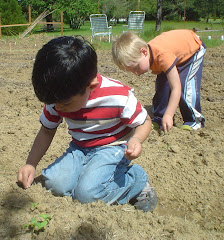And here's the one for Monroe:
Someone sent us a link to this article in the San Francisco Chronicle featuring a garden similar to our "Sharing Gardens". Its called a "Free Farm". "Free Farm article"
Llyn and Chris
www.AlpineGarden.blogspot.com/
Our new and improved site
(with the same content as this one, AND MORE!) is
Potatoes on left have too many "sproutlets." On right they have been properly stripped of all but the central sprout.
Transplanting tomato starts
These are a good size for planting. Note the greenish hue from "chitting".
You can chit potatoes in your house near a window, or on a covered porch, or in a greenhouse. Don't put them in direct sunlight and, if there's danger of frost, cover them with a towel or cloth at night or bring them inside.
This large potato was cut and allowed to dry on the exposed side before planting.
After they have "greened up' a bit, and any cut parts have sealed over, they are ready to plant. Green potatoes are poisonous so don't eat them after chitting.Here are potatoes on a covered porch where they get indirect light.
How many potatoes should you plant? Depending on the variety, you can get five or more pounds of potatoes for each one you plant. You'll need about a foot between each plant in your garden and potatoes like lots of sun and loose, sandy soil. Here in the Sharing Gardens we plant hundreds of feet of potatoes as they're a good storage crop and keep feeding people well into the winter.Chitted potatoes, too early to plant, stored in layers in a tub with leaves.
If you live locally and all this is more than you want to take on right now, and you have sprouting potatoes you want to contribute, just let us know and we'll arrange to get them from you. We'll chit them and plant them in the sharing garden and you can share in the harvest.Some of our 2009 harvest, with seed potatoes stored in a paper sack (on the right).
Let the people be as one family;
The happiness of each sought by all.
Let fear fall from our dwellings,
And may the night be safe, with open doors























